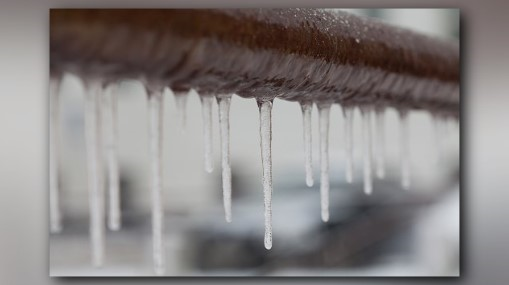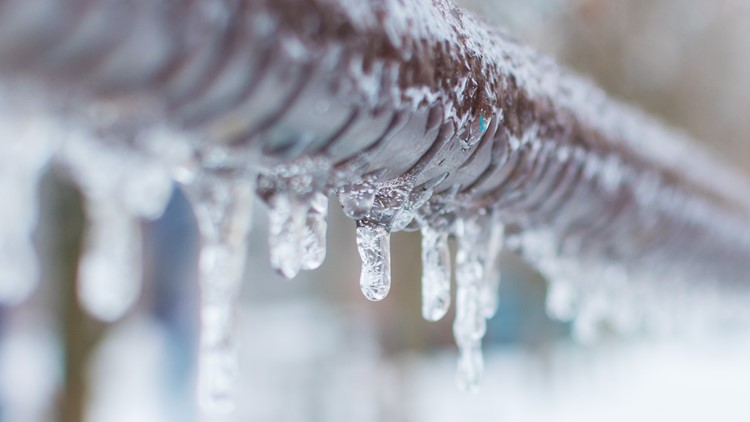Ways to Protect Pipes from Freezing: Specialist Advice
Ways to Protect Pipes from Freezing: Specialist Advice
Blog Article
The writer is making a few great pointers about How To Avoid Freezing Pipes in general in the article directly below.

Cold weather can ruin your plumbing, particularly by freezing pipelines. Here's exactly how to avoid it from happening and what to do if it does.
Intro
As temperature levels decrease, the danger of frozen pipes boosts, possibly resulting in costly repairs and water damages. Recognizing exactly how to stop icy pipes is essential for house owners in cold environments.
Prevention Tips
Protecting prone pipelines
Cover pipes in insulation sleeves or use heat tape to safeguard them from freezing temperatures. Concentrate on pipelines in unheated or exterior locations of the home.
Heating methods
Keep interior areas adequately heated up, particularly areas with plumbing. Open cabinet doors to permit warm air to flow around pipelines under sinks.
How to identify icy pipes
Search for reduced water flow from faucets, uncommon odors or noises from pipes, and noticeable frost on exposed pipes.
Long-Term Solutions
Architectural modifications
Consider rerouting pipelines far from outside walls or unheated areas. Include extra insulation to attic rooms, basements, and crawl spaces.
Updating insulation
Purchase high-grade insulation for pipes, attics, and walls. Appropriate insulation assists preserve regular temperature levels and minimizes the threat of frozen pipelines.
Protecting Exterior Plumbing
Yard tubes and outside faucets
Detach and drain garden hoses prior to winter. Mount frost-proof spigots or cover outdoor taps with insulated caps.
Recognizing Icy Pipelines
What causes pipelines to freeze?
Pipes freeze when revealed to temperatures below 32 ° F (0 ° C) for extended periods. As water inside the pipes ices up, it increases, putting pressure on the pipeline walls and possibly creating them to break.
Risks and damages
Frozen pipes can result in supply of water disruptions, property damage, and costly repair services. Burst pipelines can flooding homes and cause considerable architectural damage.
Signs of Frozen Pipes
Recognizing frozen pipelines early can stop them from breaking.
What to Do If Your Pipes Freeze
Immediate activities to take
If you suspect frozen pipelines, maintain taps open to relieve stress as the ice thaws. Use a hairdryer or towels taken in warm water to thaw pipelines slowly.
Conclusion
Protecting against frozen pipes needs proactive actions and quick actions. By understanding the reasons, signs, and safety nets, property owners can safeguard their plumbing throughout winter.
6 Proven Ways to Prevent Frozen Pipes and Protect Your Home
Disconnect and Drain Garden Hoses
Before winter arrives, start by disconnecting your garden hoses and draining any remaining water. Close the shut-off valves that supply outdoor hose bibs and leave the outdoor faucet open to allow any residual water to drain. For extra protection, consider using faucet covers throughout the colder months. It’s also important to drain water from any sprinkler supply lines following the manufacturer’s directions.
Insulate Exposed Pipes
Insulating your pipes is an effective way to prevent freezing. Pipe insulation is readily available at home improvement stores and is relatively inexpensive. Pay close attention to pipes in unheated areas such as the attic, basement, crawl spaces, or garage. Apply foam insulation generously to create a buffer against the cold. You can also wrap your pipes in heat tape or thermostat-controlled heat cables for added warmth.
Seal Air Leaks
Inspect your home for any cracks or openings that could let in cold air. Seal any holes around the piping in interior or exterior walls, as well as the sill plates where your home rests on its foundation. Additionally, make sure to keep your garage door closed unless you’re entering or exiting. Leaving it open creates a significant air leak that can lead to frozen pipes.
Allow Warm Air Circulation
During cold snaps, it’s essential to allow warm air to circulate evenly throughout your home. Leave interior doors ajar to promote better airflow. Open kitchen and bathroom cabinets to help distribute heat consistently around the rooms. If you have small children or pets, be sure to remove any household chemicals or potentially harmful cleaners from open cabinets for safety.
Let Faucets Drip
A small trickle of water can make a big difference in preventing ice formation inside your pipes. When temperatures drop significantly, start a drip of water from all faucets served by exposed pipes. This continuous flow helps prevent the water from freezing. Additionally, running a few faucets slightly can relieve pressure inside the pipes, reducing the chances of a rupture if the water inside does freeze.
https://choateshvac.com/6-proven-ways-to-prevent-frozen-pipes-and-protect-your-home/

As a fervent reader about How to prepare your home plumbing for winter weather, I assumed sharing that piece of content was worth the trouble. Sharing is good. Helping others is fun. Thank-you for your time spent reading it.
Call Today Report this page